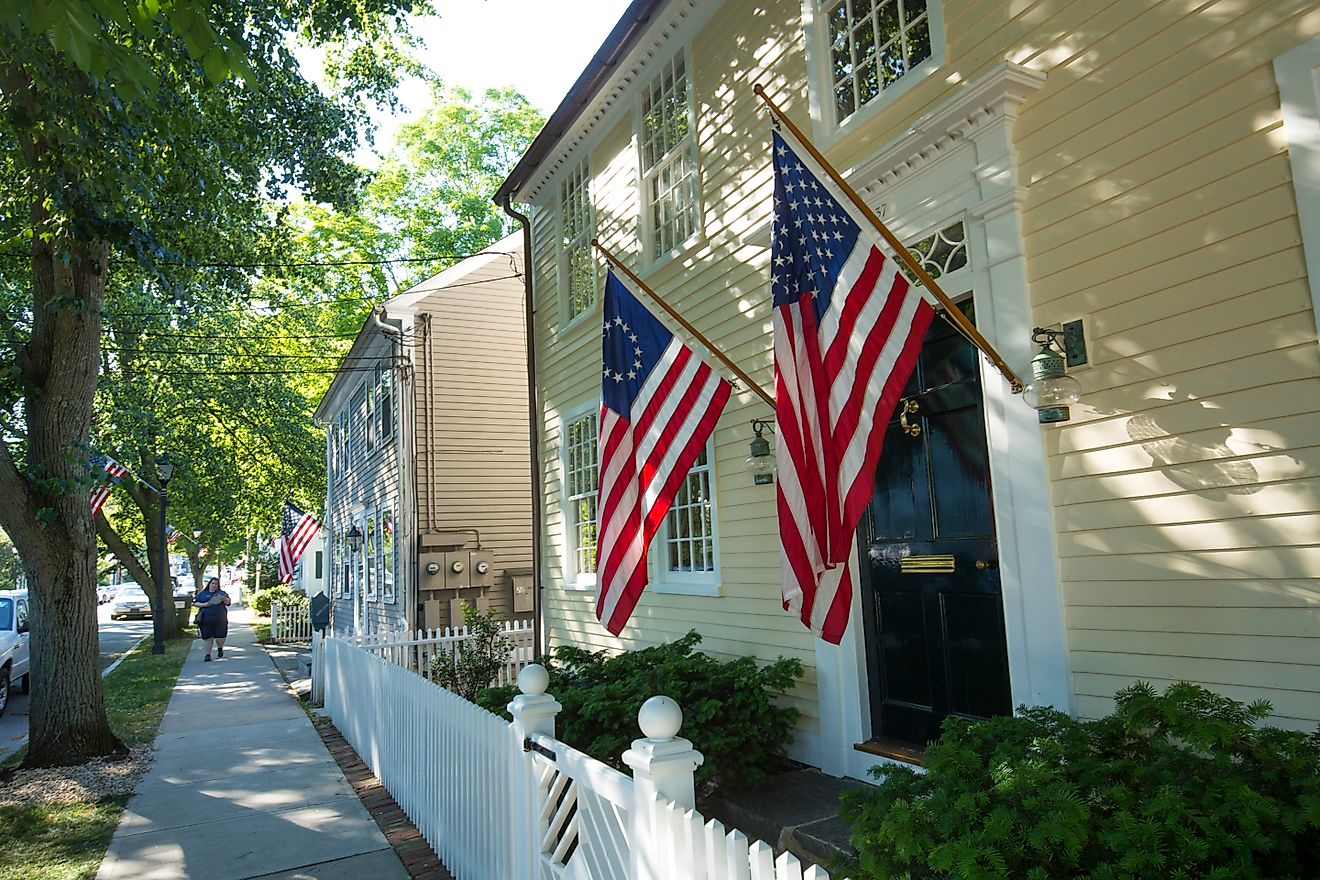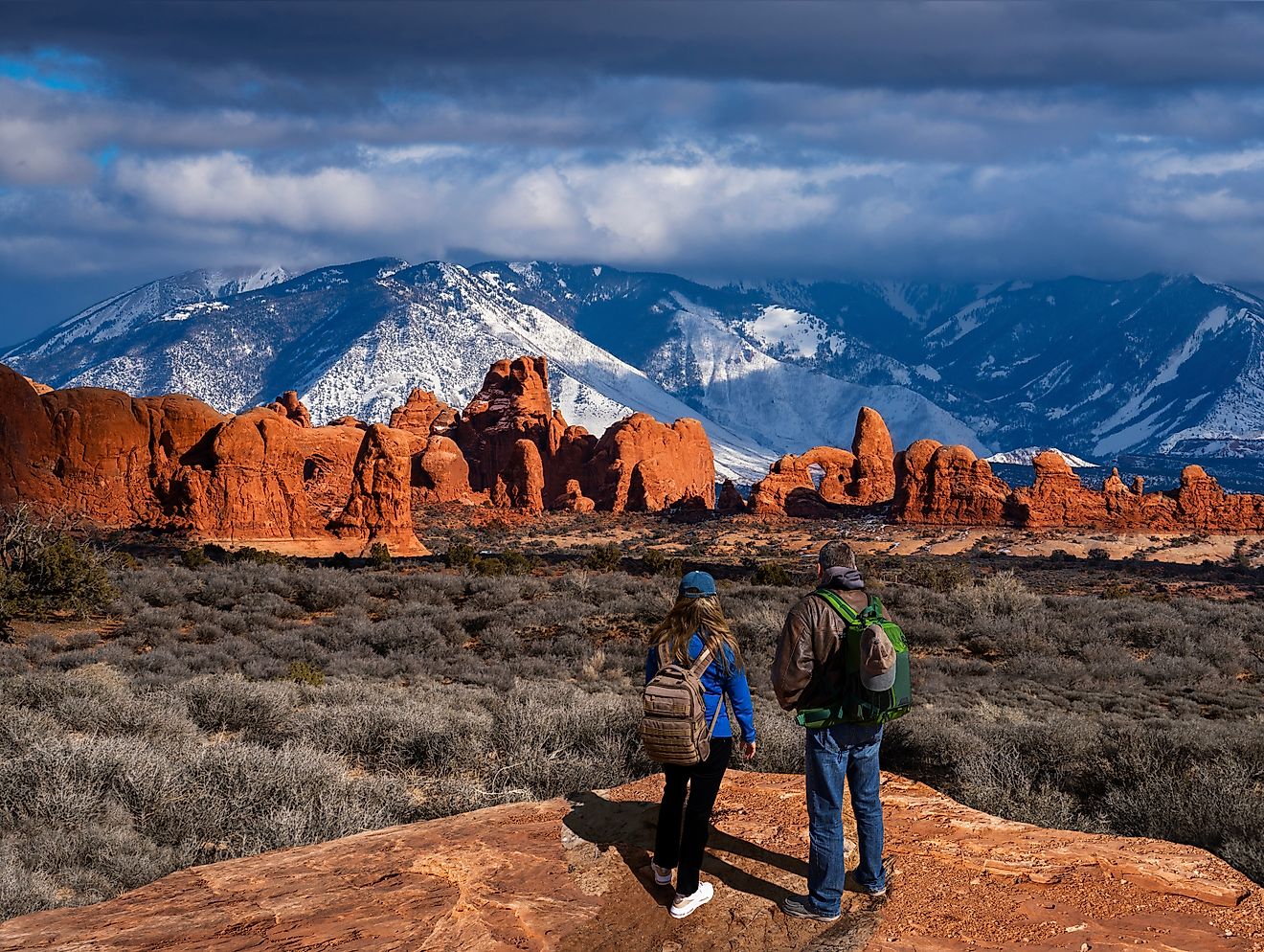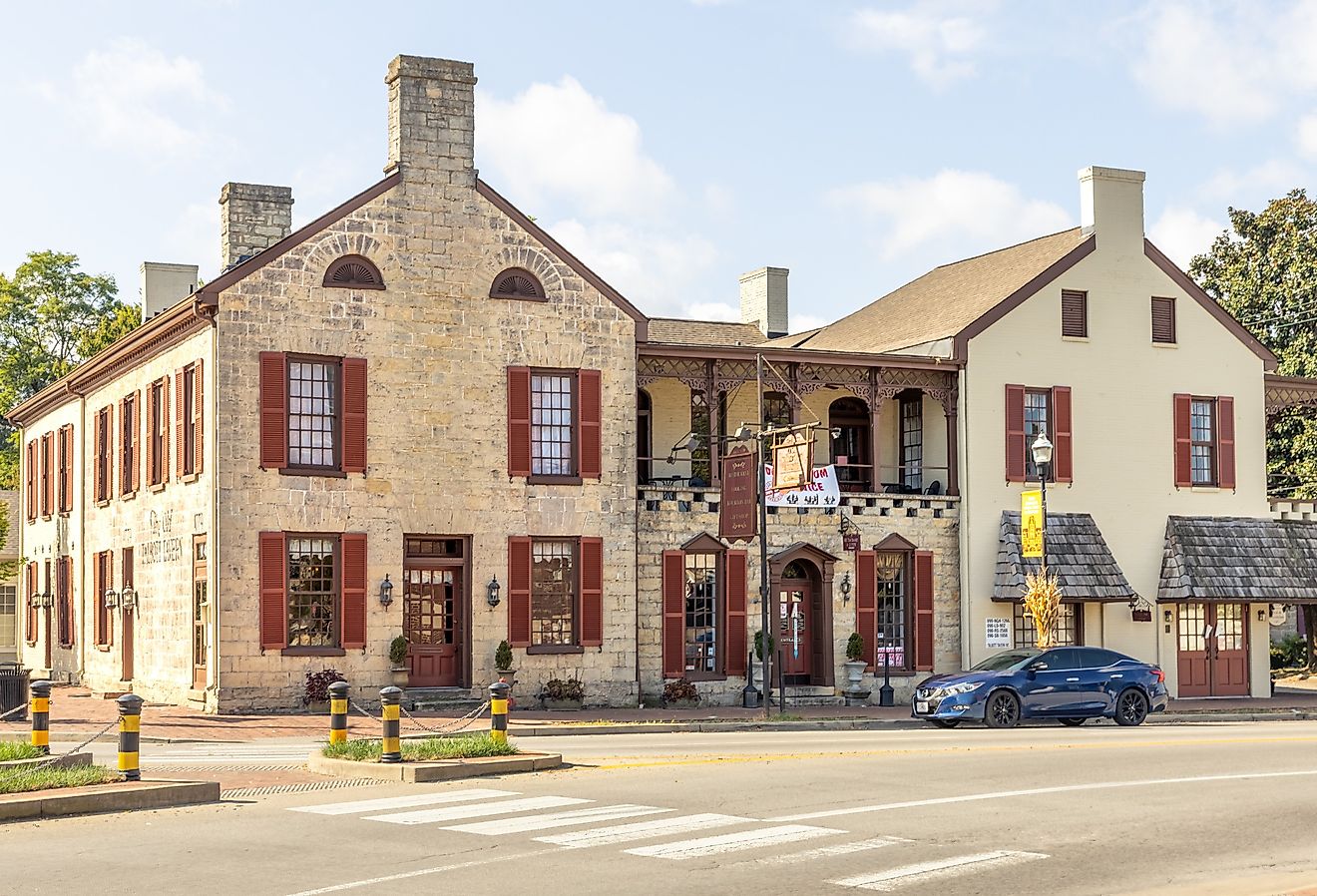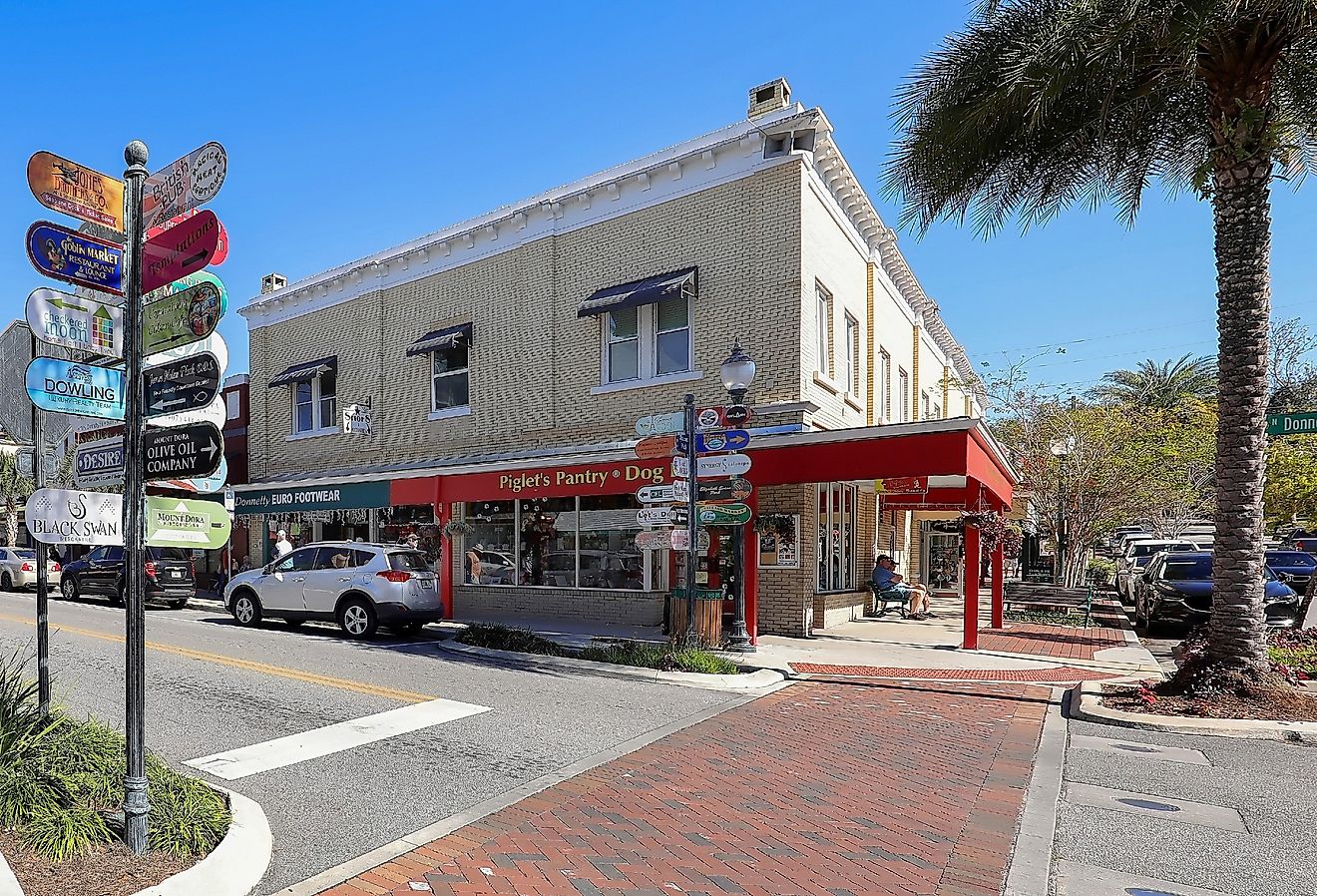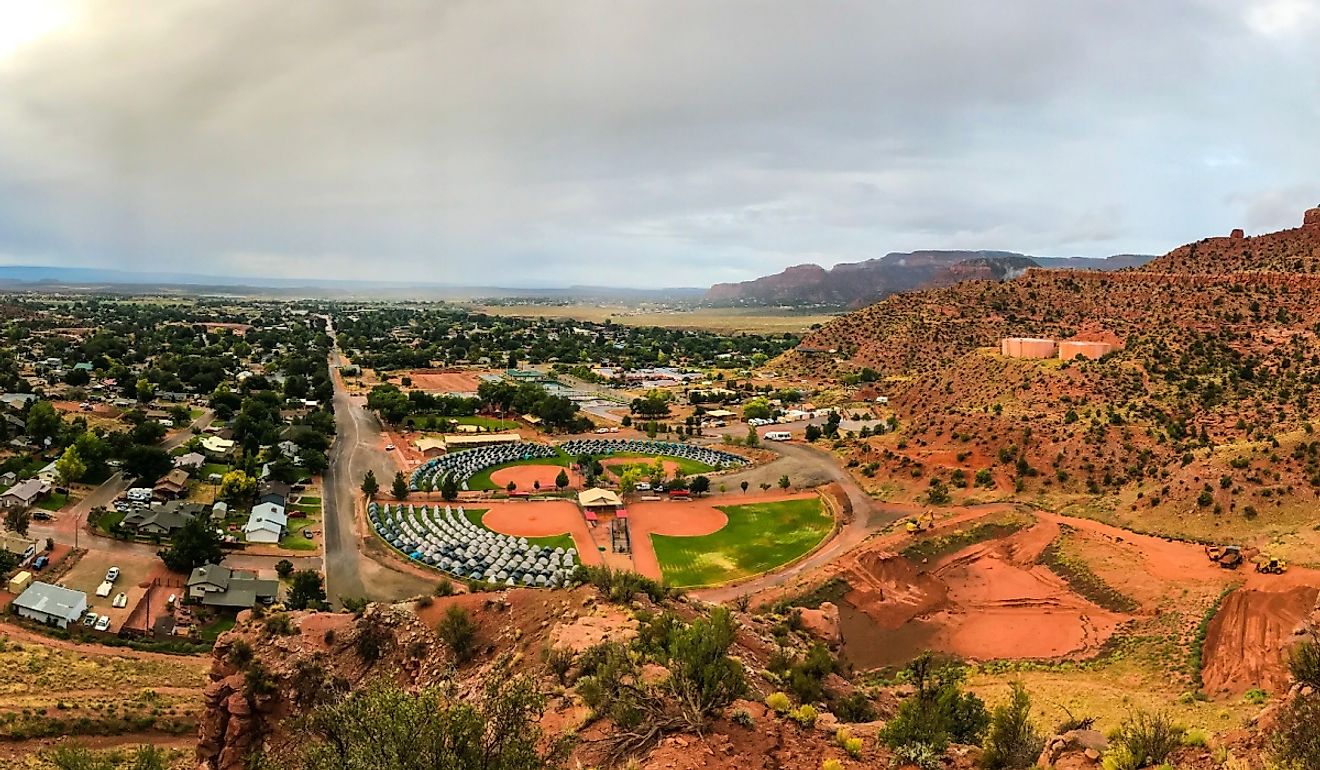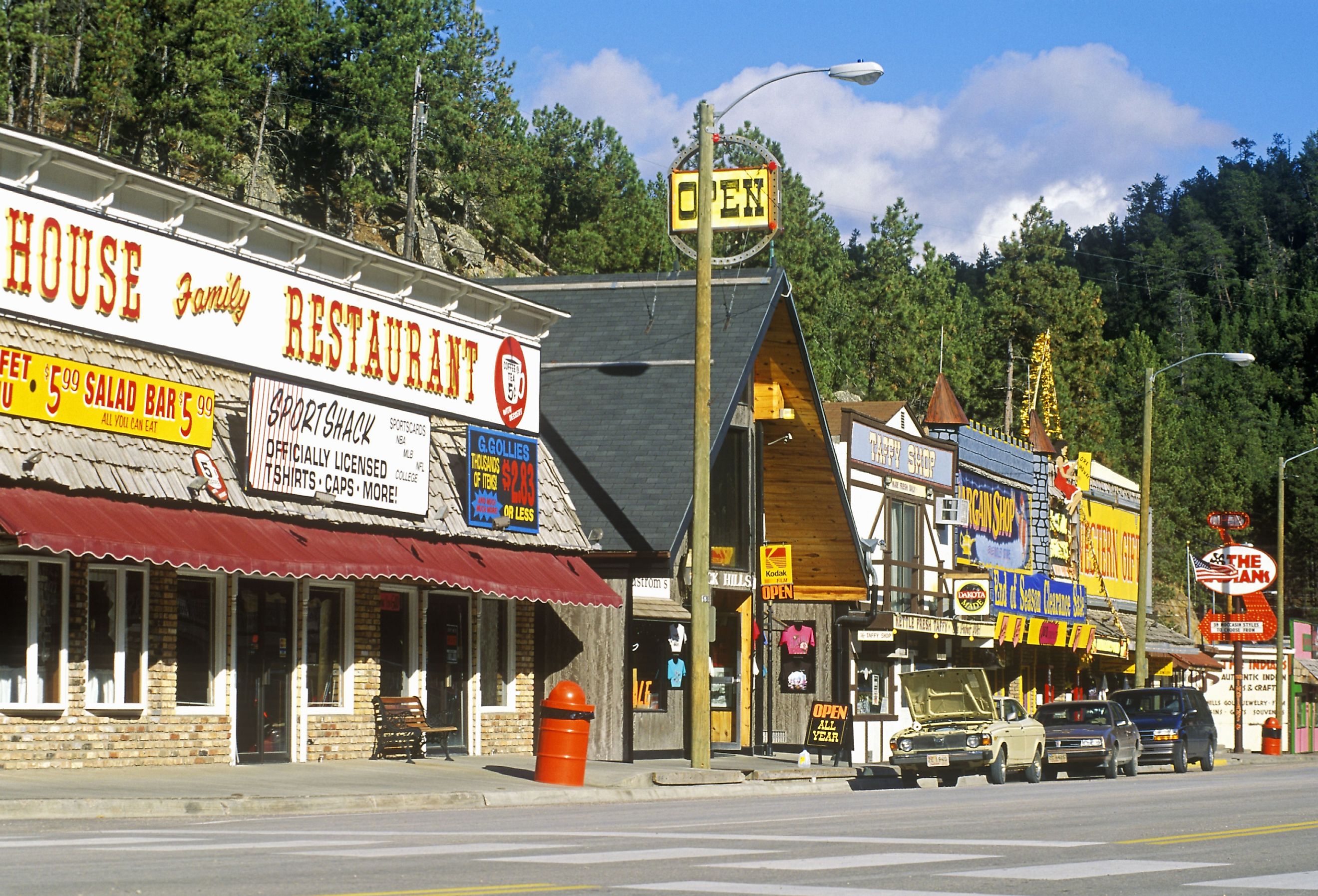
These Historic Towns in South Dakota Are Worth Exploring
The United States of America acquired the territory of South Dakota in 1803 following the Louisiana Purchase. By February 1889, the Enabling Act was passed under President Cleveland. This act marked the division of the Dakota territories into North and Southern states. Later that year, on November 2, 1889, South Dakota was admitted into the union.
South Dakota offers more miles of shoreline than Florida. This is due to Lake Oahe, which extends from Pierre to the city of Bismarck. The rest of the miles are from the 131 other lakes in the state.
Located in South Dakota, it is one of the most famous landmarks in America. Mount Rushmore is a monument of historic American Presidents. In the town of Hot Springs lies the Mammoth Site. This paleontological site features the largest remains of Mammoth fossils in the world. Needless to say, South Dakota is brimming with history, and these towns are certainly worth exploring.
Yankton
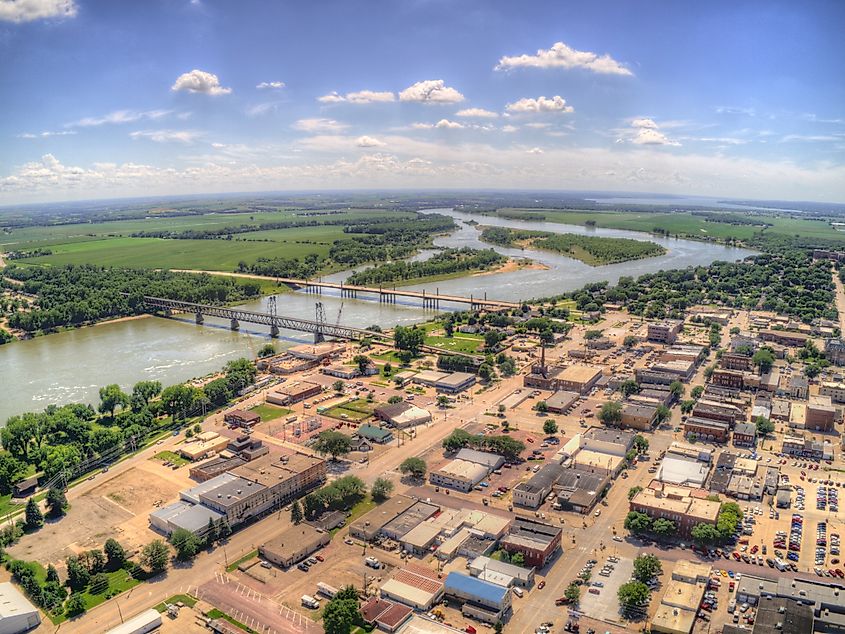
The town of Yankton lies in the southeastern part of South Dakota. The community was established in 1861 following the Organic Act. Governor William Jayne selected Yankton as the capital of the Dakota Territory. Today, the town sits along the Missouri River and is a lovely place to visit.
In 1874, Governor John L Pennington moved to Yankton. After his time as governor, Pennington remained in Yankton. He would start the "Weekly Telegram" paper. In the 1980s, restoration of the home commenced, and the house still stands today.
Completed in 1924, the Yankton Meridian Bridge was the first built over the Missouri River and was also set to be the pathway for a railroad. By 1953, when it had never occurred, the city had developed the bridge to two one-way paths. By 2011, the city added pathways for recreational use, featuring hiking and biking across the bridge as top activities.
The Dakota Territorial Museum is home to 45,000 historic artifacts. It focuses on the history of the Dakota territory up to the Enabling Act of 1889. In 1936, the Yankton County Historical Society was formed. By 2018, they had taken control of the historic Mead Building. Highlights at the Museum include a local gift shop.
The Lewis and Clark Theatre Company is a live performance group local to Yankton. They operate out of the historic Dakota Theatre. It first opened in 1902 as an Opera House.
The Yankton Riverboat Days and Summer Arts Festival is a three-day celebration. The three-day weekend features a Kayak River race as well as live musical performances. 2024 marks the 41st anniversary of these festivities!
Pierre
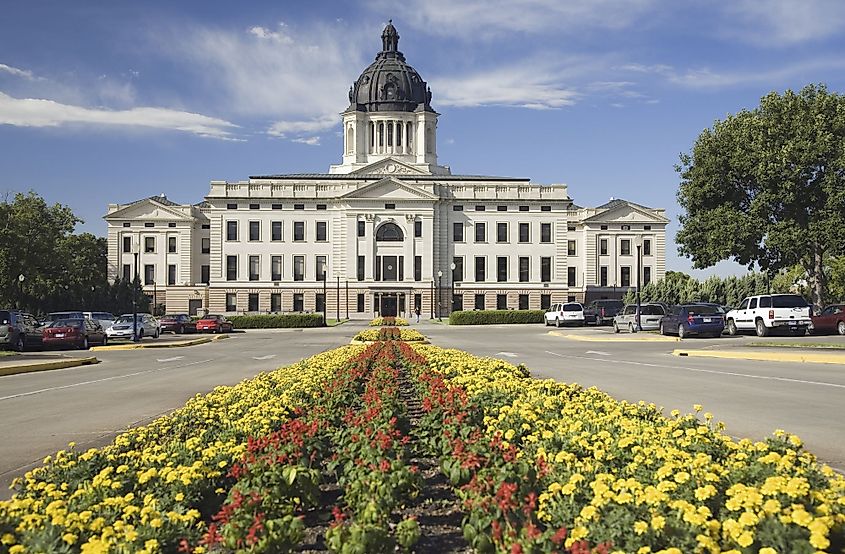
The capital of South Dakota, Pierre, sits in Hughes County along the Missouri River. The Community was first established in 1880. It is a town with shopping and dining. There are also areas dedicated to preserving local history.
One of the oldest remaining local buildings is the old Blackburn House. In 1887, Dr. Blackburn purchased the property. As a resident of Pierre, Blackburn published more than 30 books. A future owner of the Blackburn estate is C.B. Billinghurst. Billinghurst established the "Pierre Daily" newspaper.
The World War 2 Memorial in Pierre features six statues. These statues portray military branches served by South Dakotans during the war. Today, the statues sit on a Peninsula by Capitol Lake. Near the statues is a message inscribed on granite. It reads, "South Dakota, WWII warriors: Why they fought - For Flag - For Country - For all Us."
The South Dakota State Historical Society first established itself in 1862. Over the course of its existence, society has preserved documentation of the state. This history is on display at the South Dakota Historical Society Museum.
Since 2010, the city of Pierre has sculpted life-sized statues of every state governor. The statues each have their own distinct feature. The Trail of Governors is also home to the annual Run with the Govs. The 3.5-mile race takes contestants to the steps of the state capital. The 2024 festivities will mark the 7th annual race.
Hyde Stadium is the home of Baseball in South Dakota. It was first constructed in 1935, and in 2016 experienced a $2,000,000 renovation. Today, the ballpark is the home of Post-8 American League Baseball.
Keystone
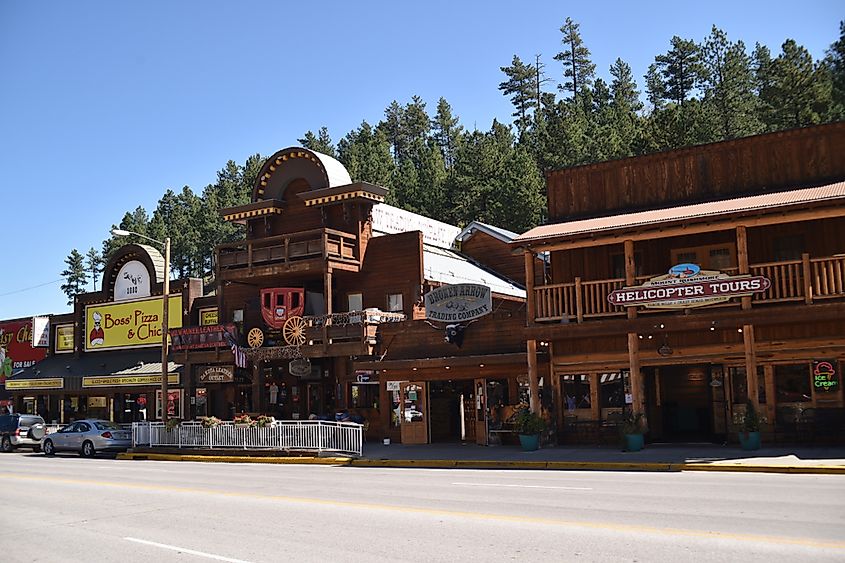
Keystone sits in Pennington County in the Black Hills region of South Dakota and was established in 1891. The discovery of Placer caused a major population growth. Keystone is the home of Carrie Ingalls Swanzey from the Little House on the Prairie Book series.
The Rushmore Borglum story is a dedication to the legacy of sculptor Gutzon Borglum. Borglum is the architect behind the historic Mount Rushmore. Visitors can learn of Borglum, from his early days to his early creations. In his 50s, Borglum moved westward and started his famous creation.
The Big Thunder Gold Mine has over a century of history in Keystone. The mine was first discovered in 1892 by German Immigrants W.B Krupp, and J.A Engle. The mine is one of the safest and most maintained in the area. Today, visitors can book a tour of the mine and learn about its history.
The 1880 train is a historic standard gauge excursion train. The two-hour, fifteen-minute journey takes visitors through the Black Hills region. The train departs daily through the months of May until early October.
3.2 miles to the southwest of Keystone lies Mount Rushmore. Visitors can take in the 60-foot structure of four historic American presidents. In 1923, the plan for Mount Rushmore was created in an attempt to attract tourists to the state. By 1927, sculptor Gutzon Borglum began the construction. The monument is open year-round for visitors.
The National Presidential Wax Museum houses wax figures of all 46 American Presidents. Exhibits in the museum also tell the stories of each president. Visitors can also explore the oil paintings of artist and illustrator Harvey Dunn.
Mitchell
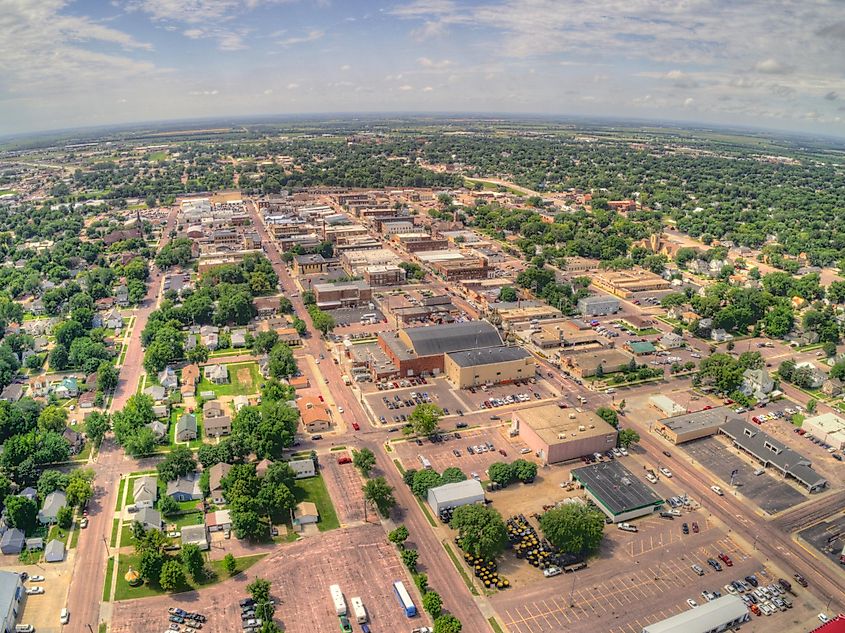
Seated in Davison County is the town of Mitchell. The establishment of the community occurred in 1879. Today, the town is replete with history and culture and is a welcoming location for visitors.
The Corn Palace of Mitchell has, on average, 500,000 visitors yearly. The building epitomizes Mitchell as the "Corn Capital of the world." On the outside, the structure's unique design provides a photographic appeal. The six-foot-tall statue named "Cornelius" is a popular spot for selfies. The inside of the Palace includes a large multipurpose foyer. The Palace is the home of live events, athletics, and industrial exhibits.
The Mitchell Prehistoric Indian Village is an archaeological site in South Dakota. In 1910, students from Dakota Wesleyan University discovered the site. The village was once home to a society that lived in the area over 1,000 years ago. Children can spend their day digging in a nearby kids' site for arrowheads.
The historic Seaman is a Queen Anne Eastlake-style structure built in 1887. During his time in Mitchell, Seaman took a role in organizing the Mitchell National Bank. 2018 the house became listed on the National Register of Historic Places.
The Guns of History Gun Gallery gives visitors a glance at historic guns used in battle. The museum has a diverse collection. It includes guns from George Custer's 7th calvary used in the Battle of Little Bighorn.
Each year, the Corn Palace celebrates its annual redecoration. This event features live entertainment, carnival rides, and food vendors. The 2024 festivities will take place from August 21st to August 25th.
Vermillion
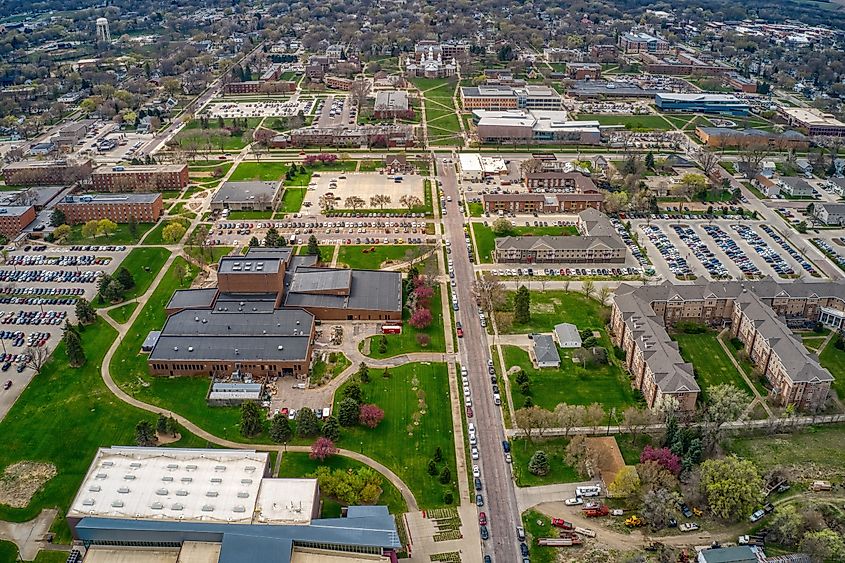
Seated in Clay County is the town of Vermillion. Today, Vermillion is the home of the University of South Dakota. The University is home to 9,000 post-secondary students. Vermillion offers plenty of tourist attractions dedicated to musical history and outdoor adventure.
7.2 miles north of Vermillion is Spirit Mound State Historic Prairie. Lewis and Clark explored the region in 1804 during their travels across America. Since 2003, the city has committed to restoration efforts. The goal is to transform the region to how it would have looked when Lewis and Clark walked through.
The National Music Museum in Vermillion is home to a diversity of instruments. Amongst this collection is the world's oldest cello and the guitars used by Elvis and Bob Dylan. For over 50 years, the Museum has been open to the public, providing a look at musical history.
In 1882, Horace J Austin built the historic Austin Whittemore house. It is one of the last remaining local structures from the 19th century. Austin was an early pioneer in the region who settled in Vermillion after the Civil War. The House changed hands over the generations, adding to its history.
The Valiant Vineyards Winery & Distillery is the oldest winery in South Dakota. On July 1, 1996, the Farm Winery Bill passed the state legislature. Today patrons can enjoy a 2002 Wild Grape Port while taking in the setting of the Missouri River Valley.
Hill City
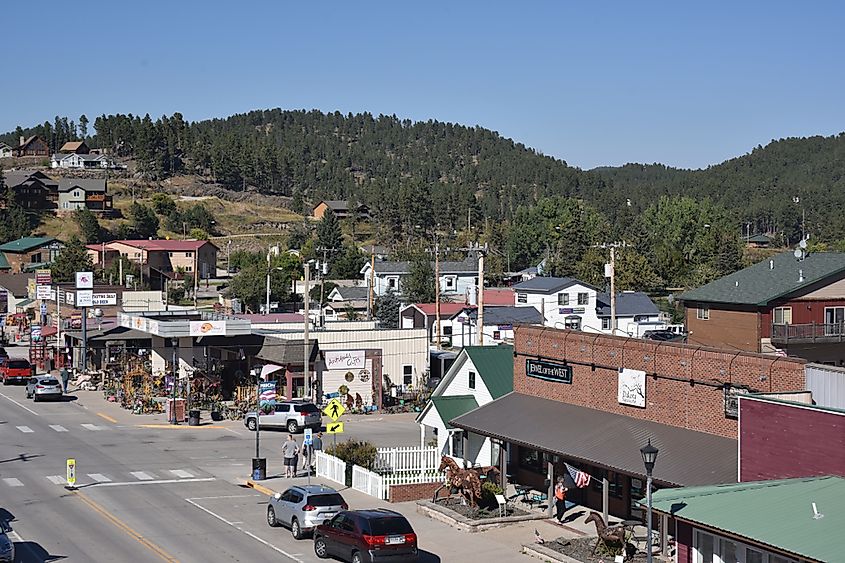
Hill City sits within Pennington County. The establishment of the community occurred in 1876 following a gold rush in the region. In 1990, archaeologist Susan Hendrickson discovered a Tyrannosaurus skeleton.
The Black Hills Institute Museum is the home of "Stan." Stan is one of the largest T. Rex skeletons ever discovered. The Museum also has a vast collection of vertebrate and invertebrate fossils. For decades, the Black Hills Institute has worked to collect its vast array of fossils. The Museum is an educational exhibit on creatures from the Late Cretaceous period.
The South Dakota Railroad Museum is a local museum. It tells the story of how railroad innovation has influenced the region. The museum shows exhibits telling the story of the state's railroad system. They also have a collection of memorabilia, from lanterns to dining car china.
In 2021, a group of citizens set out to build a 30-foot statue of Smokey the Bear. The symbol has a unique history within the local Community. Back in 1939, 25 students were rescued from a wildfire. Following this event, the school received the symbol of Smokey Bear to name as their mascot.
10 miles south of Hill City is the Crazy Horse Memorial. The idea of creating the monument happened in 1939 as a way to honor Native American Culture. Sculptor Korckzak Ziolkowski was the man who agreed to take on the project. Ziolkowski worked until his death in 1982. During this period, he never received a salary for his work.
4 miles south of Hill City is The Palmer Gulch. It is home to horseback stables and a natural wildlife preserve. The Gulch is also the location of the Chuckwagon Show and Dinner. Guests can feast on steak and beans while watching live entertainment. In 2024, the Dinner has 50 scheduled dates.
Established in 1959, the Black Hills Stock Show and Rodeo is a celebration of the Old West. Each year, an average of 331,000 visitors visit Hill City to witness the 120 livestock and rodeo events. The 2024 festivities take place from January 26 - February 3.
Hot Springs
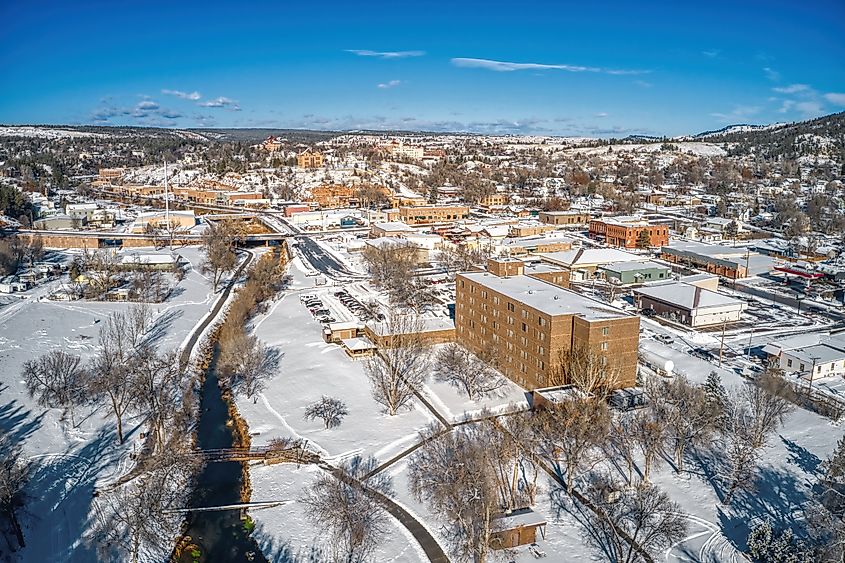
Hot Springs, South Dakota, sits in Fall River County. It was a community established in 1879, and by 1882, it was renamed Hot Springs. Visitors can take advantage of a yearly mean temperature of 48.5 degrees Fahrenheit.
The Mammoth Site is home to one of the largest concentrations of Mammoth remains in the world. In 1974, workers discovered the site while clearing ground for building development. By 1979, studies confirmed the finding of many mammoth remains. Researchers date the existence of the sinkhole from 140,000 to 190,000 years old. As of today, the discovery of 60 mammoth remains has happened at the site.
Battle Mountain Sanitarium was the caring facility for soldiers during the Civil War. The institution opened in 1907, and its first patient was a man named Charles Wilbert. Thomas Kimball was the architect of the building. He designed the structure with wards in the center of the building. This design let in more air and helped separate patients to avoid contamination. The Sanitarium was listed as a national landmark in 2011.
The 1888 Hot Springs Jail is one of the oldest standing prisons in the state. According to reports, in 1895, Calamity Jane spent a night in jail for drunken behavior. In 1919, the Lambert family bought the property and did extensive remodeling work. Today, historical markers exist on the premises. They signify the significance of the structure for tourists.
Each year, Hot Springs celebrates the Main Street Arts and Crafts Festival. Located at Centennial Park, the event features many unique shopping vendors. They also have live entertainment and a children's stage to enjoy. 2024 marks the 47th Arts and Crafts Festival. The event will take place at the end of June.
The Evans Plunge Mineral Springs Pool is the oldest tourist attraction in the region. The construction occurred in 1890. The pool has a temperature of 87 degrees Fahrenheit, providing a relaxing experience. Open all year round, the Springs is a welcoming destination for all visitors.
South Dakota is replete with centuries of fascinating history. Visitors can spend the day at the Mammoth archaeological site in Hot Springs. They can also examine the collection of instruments at the National Music Museum in Vermillion. There are generations of stories to discover in South Dakota. So make sure you book your tickets now! A great state awaits you.
